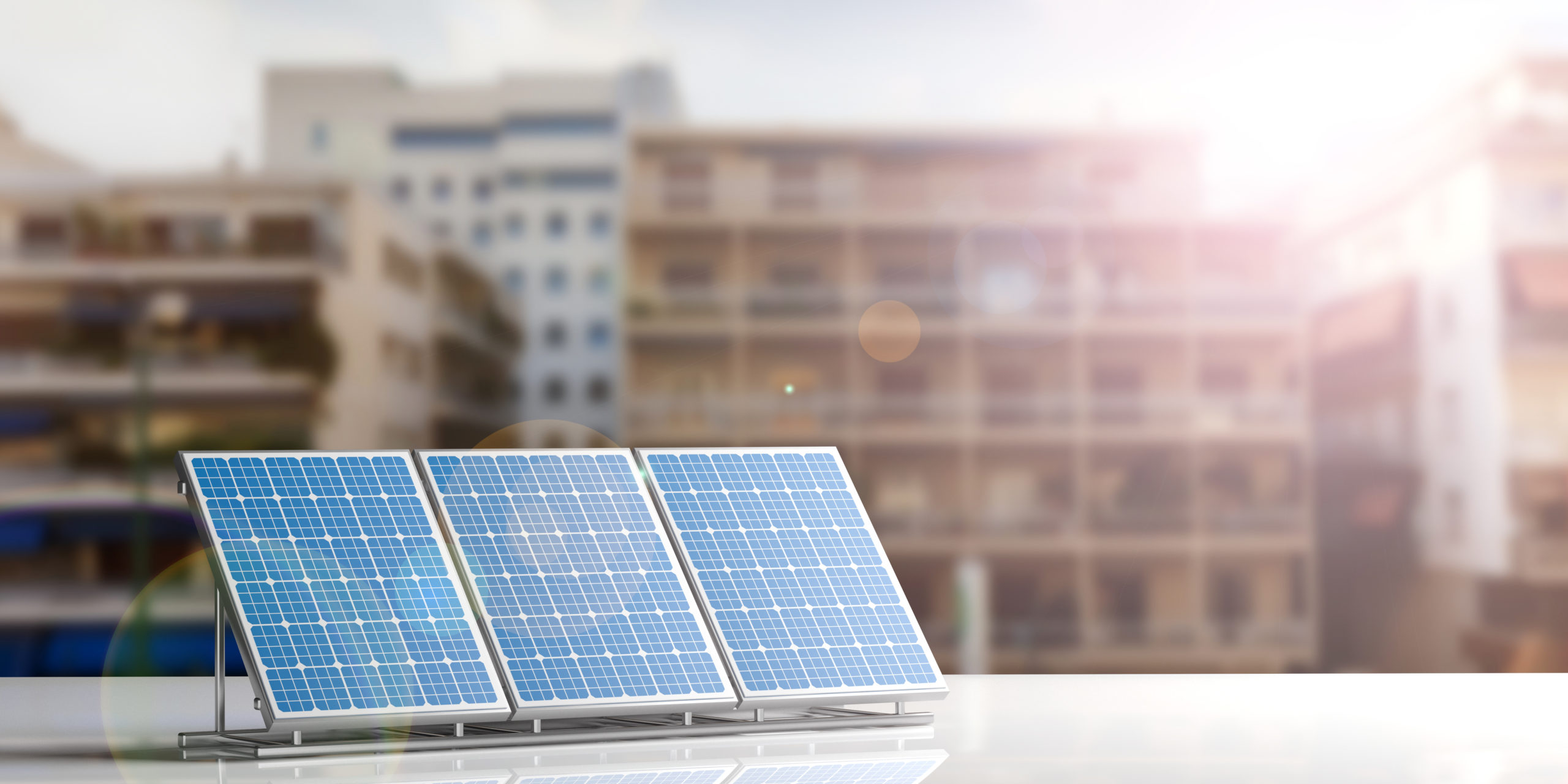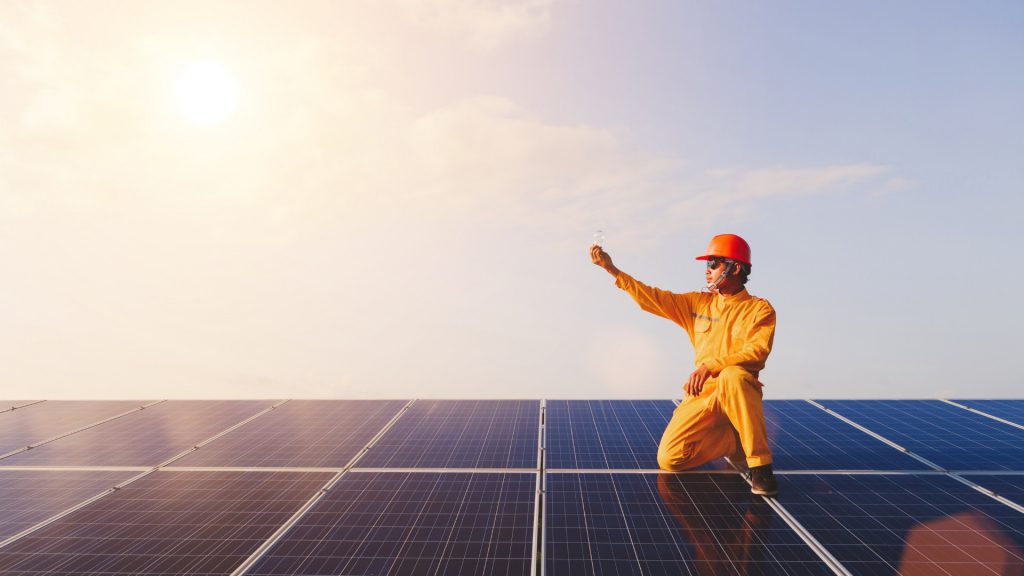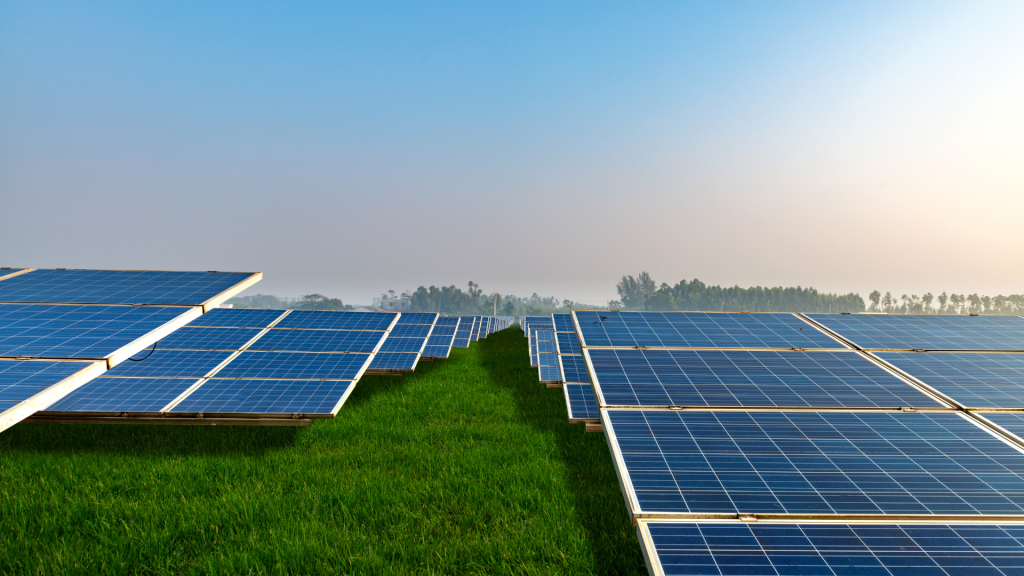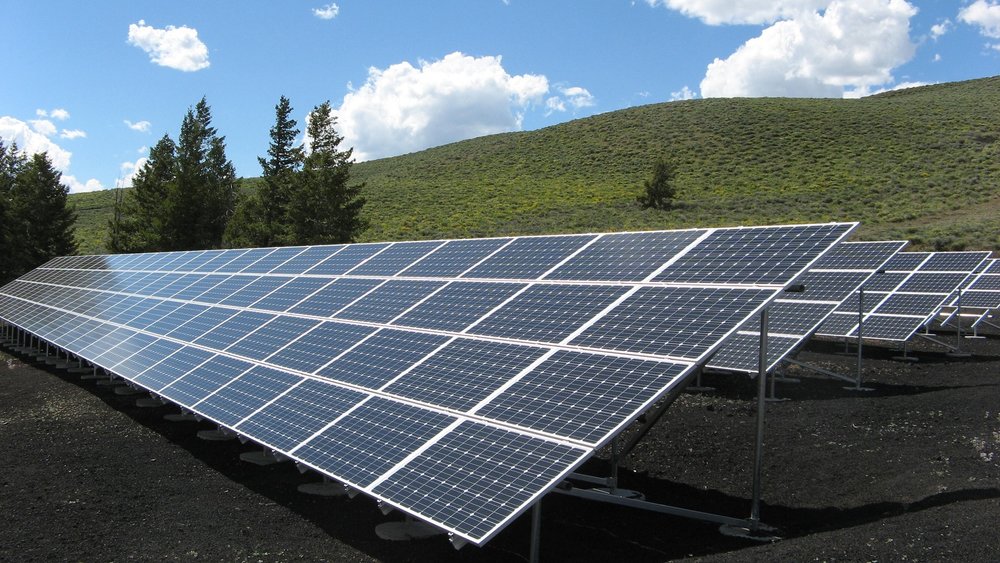Shopping for solar can seem confusing, but it doesn’t have to be. In fact, there’s a way today for nearly everyone to go solar. With this guide, you can choose the best solar option for your home.
Table of Contents
Shopping For Solar Used To Be Hard
It turns out, if you ask Americans whether they’d like more solar energy, they overwhelmingly say yes. A whopping 89% favor more solar power, and 74% say that we should use solar “as much as possible.”
Yet the majority of us haven’t gone solar ourselves. What explains that disparity?
Part of the problem is that going solar seems like a far-from-simple purchase. It has earned somewhat of a reputation for being difficult, expensive, confusing, unfamiliar, or time-consuming. One doesn’t simply get solar energy on a routine trip to the grocery store…right?
Although you can’t buy solar panels from the produce section, shopping for solar actually doesn’t have to be hard. In most cases, it’s as simple as following a few guiding principles.
In fact, it’s simple enough that, in the next five minutes, you’ll be able to evaluate every method available to you. And depending on which option you choose, you might be able to go solar in less time than you spend at the grocery store.
Without further ado, here’s how you shop for solar:
First, Get To Know Your Solar Options
There are a handful of different ways to benefit from solar energy.
Some customers dive right into the first opportunity they hear about, only to learn they could have found a better one if they’d researched a little bit. That’s why it’s essential to stake out all the options before diving into one.
These are the primary ways that you, as a homeowner or renter, can go solar:
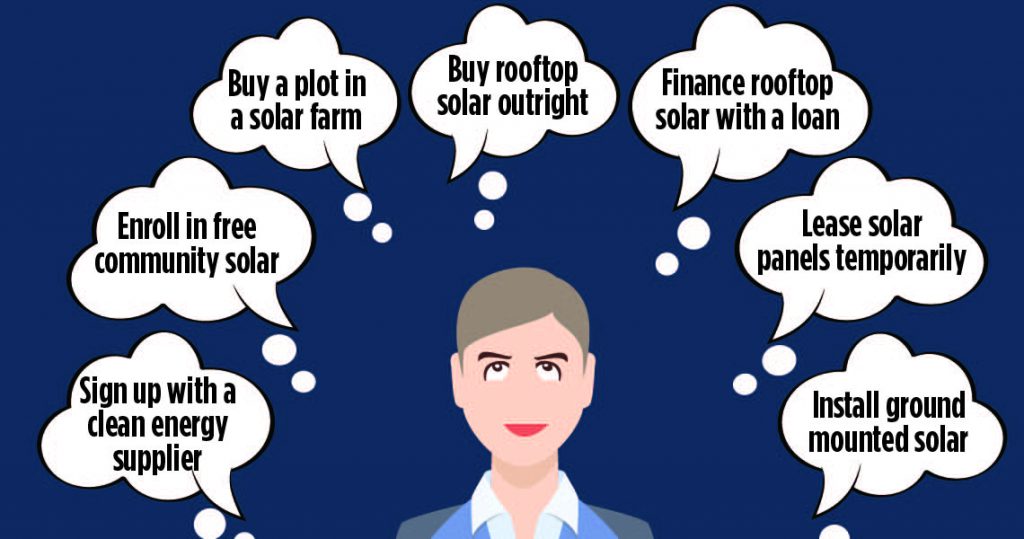
Overwhelmed? Don’t be. You can narrow these choices down in a jiffy by answering a few simple questions.
Do You Own Your Home?
If you own your home, any solar option could potentially be yours. You can skip right to the next question.
If you’re one of the 100 million Americans that rent their home, your options narrow considerably. You might be able to negotiate with your landlord to install solar panels on your property (this is usually easier if the landlord pays the electric bill or if they are especially environmentally conscious), but, unfortunately, whether or not they go through with it is out of your control.
Don’t despair: renters can still go solar! To find out how, skip straight down to the section on community solar.
Ask Yourself: Do You Want Solar Panels On Your Roof?
The first three options share one point in common: installing solar panels on your roof.
You’ve probably seen homes with rooftop panels. It’s a fantastic way to negate your monthly electric bills and offset your home’s energy use with clean power. Perhaps you’ve been so enamored by those rooftop panels that you want some for yourself.
If so, we advise you to scroll down to the next question to figure out whether rooftop solar is right for your household!
Still, the look of solar panels prominently displayed on your house isn’t for everyone. It’s perfectly common, even if you’re all about clean energy, to be hesitant to put it right on your house. And it’s not just about aesthetics, either–installing solar panels on your roof comes with the burden of bringing a company in to perform a site evaluation, and, later, construction. It also comes with financing your own solar energy system.
If rooftop solar doesn’t appeal to you right now, don’t sweat it. There are other options further down the chain.
Is Your Roof Right For Solar?
If you’ve decided you’d like rooftop panels, the next step is to figure out whether that’s feasible for you.
Not everyone’s roof is ideal for solar panels. Rooftop solar works best when it’s facing south or west, since these orientations give the panels the most sunlight. If your roof faces a different direction, or if it’s shaded by nearby buildings or trees (like a Solstice customer, Jerry, who didn’t want to cut down the Colorado Blue Spruce trees he’d planted to install solar panels), it might not be suitable for solar.
If you’re looking to offset all of your energy use with solar, you’ll also need a big enough roof to do so. Most Americans’ roofs aren’t big enough to support all their needs with solar, but they can usually still cover part or most of their needs, which goes a long way toward lowering costs and preserving the environment.
If your roof doesn’t work for solar, ground mounted solar or community solar might still be great for you. We suggest you think about this next question:
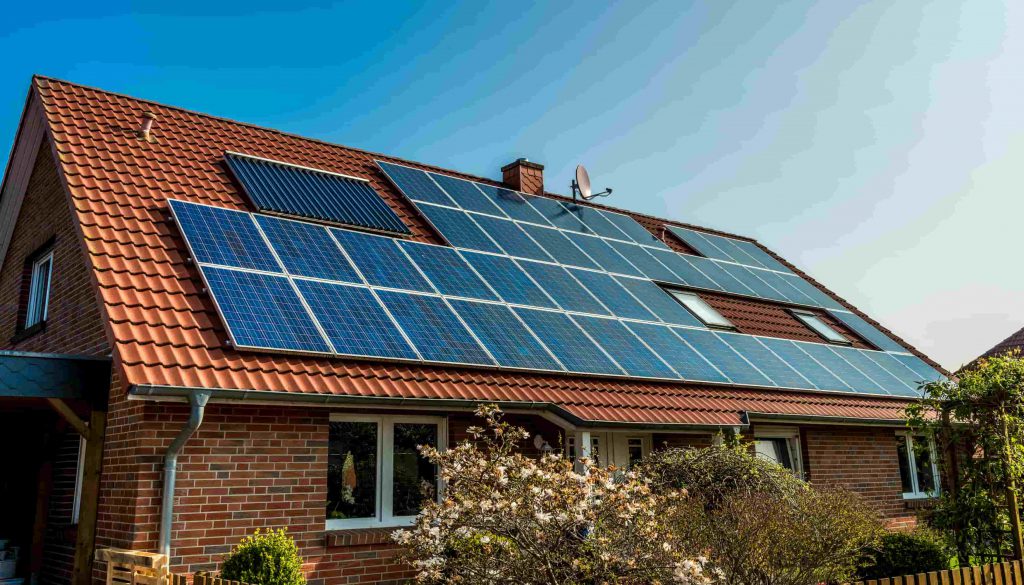
Are You Set On Staying In Your Home for at Least the Next 5-10 Years?
This question is necessary for homeowners thinking about installing solar on their property.
Although the environmental benefits of solar kick in right away, installing your own solar panels typically involves an upfront cost that takes 5-10 years on average to recover through bill savings. You’ll reap huge financial benefits from that point on, but you won’t get to enjoy them if you move before those savings come in.
If you aren’t planning to stay in your house for quite some time, installing solar on your property might not be the way to go. Scroll down to learn more about community solar, which you can join without the upfront cost.
Can You Afford To install Your Own Solar Panels?
The biggest con to installing your own solar panels today is the cost.
Granted, those costs are coming down extremely quickly. The cost of installing rooftop solar has been halved since 2007. But that still leaves the investment at around $10,000-15,000 in most places–prohibitive for many Americans.
If you can afford that cost right now, your roof is good for solar panels, and you plan to stay in your home until you get a return on your investment, congratulations! It sounds like rooftop solar is perfect for you.
If You Can’t Pay the Upfront Cost Right Now, Can You Get a Loan?
If you can’t afford that upfront cost right away, don’t give up yet: you might still have a shot at rooftop solar. Here are three more options to consider:
You can apply for a loan to finance your solar installation. Just like any loan, you’ll want to consider term lengths and interest rates to evaluate whether a loan is right for you. You’ll also want to stay in your home long enough to pay off the loan in full, which typically takes 10-20 years. We recommend using EnergySage to learn more about solar loans and compare the top loan providers in your area.
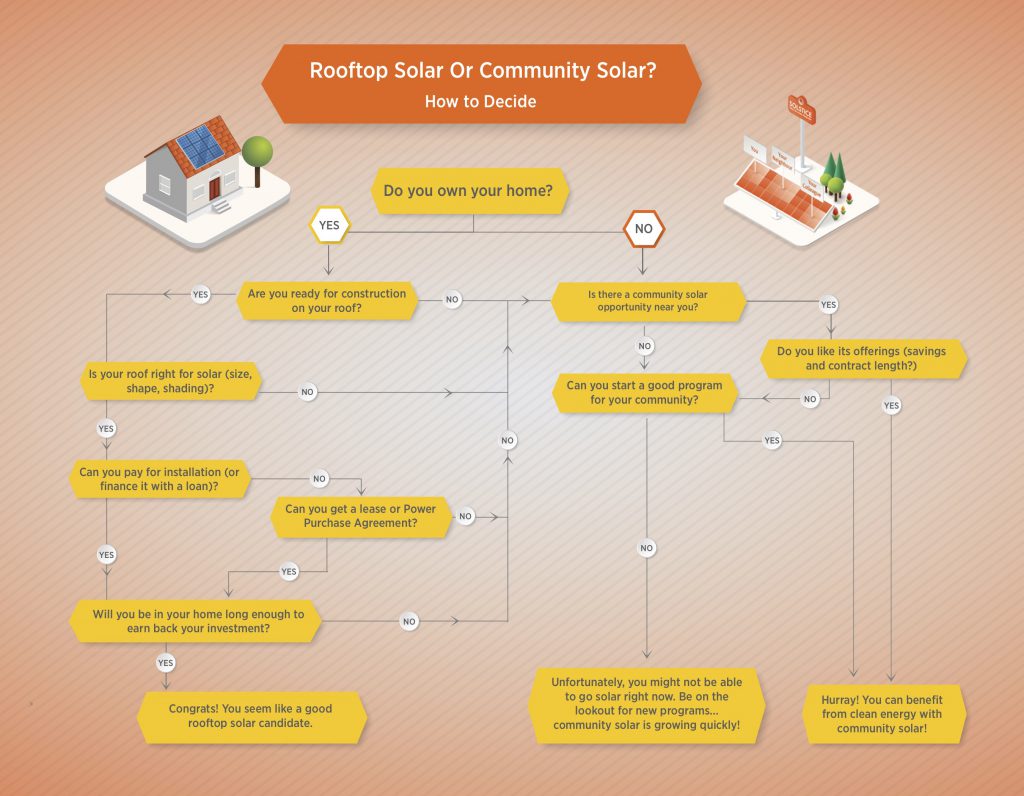
Two Other Methods For Rooftop Solar: Leases and PPA’s
If you choose not to buy your own solar panels straight up or through a loan, you can apply to lease solar panels from a solar company. You’ll avoid the upfront costs and the debt this way, but you won’t end up owning the panels.
Lastly, you can get solar panels through a purchase power agreement (PPA), which will lock in your energy rate for a set period of time. Your solar rate will be projected to be lower than your electricity cost without solar–but of course no one can be certain how energy prices will change over time. This option won’t save you as much as a lease or installing your own panels–in fact, it might not save you as much as community solar would with less hassle.
If It’s a No to Rooftop, How About Ground Mounted Panels?
You don’t hear about ground-mounted panels as often as rooftop solar, but it’s a good alternative for certain homes that don’t have the roof for solar. If you have space to put panels on your property, you might want to pursue a solar array on the ground instead.
Ground mounted solar installations come with a few advantages. As long as you’ve got space that isn’t shaded, it’s easier to install panels at the ideal angle for sunlight on the ground than on a roof. Second, you typically have more space on the ground to build a solar system that will cover all your needs.
In this way, ground mounted solar can solve some of the challenges of rooftop solar panels. However, they still come with the high cost of installing solar on your property and the long-term commitment to staying in your home to make sure you earn savings.
If these obstacles sound like too much right now, it’s time to think about community solar.
Community Solar Brings the Benefits of Solar Without the Costs
If you’ve said no anywhere along this chain–whether that was to owning your home, staying there for long enough to get paid back, or handling the burdens of your own installation–then community solar is probably the best choice for you.
This is the one that will let you go solar in less time than a grocery trip.
Community solar lets you go solar without installing anything on your home. You can simply enroll in a shared solar farm located off of your property, earn credits on your utility bill for your solar share, and support solar power that way.
Some community solar models involve buying your own solar share. This option is like installing your own rooftop or ground mounted system, minus the construction crews at your house.
Other community solar providers let you subscribe to a solar garden, meaning you don’t have to buy anything and you start saving from day one. You can tap into your solar share, earn savings alongside your neighbors, and you don’t even have to pay to join.
If you pay your energy bill and you have free community solar near you, you can go solar as a renter, as a homeowner, as anything you like. Learn more about community solar with this guide.
An Extra Option To Support Solar: Sign Up With a Clean Energy Supplier
If you live in a deregulated energy market, you probably know you can choose your own energy supplier. Your power will still be delivered by the standard area utility, but energy service companies (ESCOs) can compete to supply the energy those power lines deliver to you. Not only do they compete on price, but they can compete on energy source, too.
ESCOs can offer clean energy programs to customers looking to contribute to greener energy generation. If you elect to sign up for a clean energy program, you can support more solar power in the grid.
Here are a couple notes to consider with this option:
- Green programs from ESCOs cost more than the standard energy you’re paying for now.
- If you do sign up with a clean energy supplier, that doesn’t preclude other options, like community solar. You can still sign up for those at the same time.
- A clean energy program through an ESCO isn’t necessarily as clean as local solar power. For instance, ESCOs can buy renewable energy credits from distant power plants, taking credit for power produced in other places. That energy needs to be transmitted to your local area, which makes it less efficient.
There are trustworthy ESCOs and shady ESCOs. If you do elect to sign up with a third-party energy supplier, take the time to make sure you’re picking a trustworthy one!
Compare Quotes for the Best Deal
No matter which option you choose, make sure to shop around before you pick a company. A Google search for solar companies in your area will typically do the trick, but you can also use more sophisticated shopping tools like EnergySage, PickMySolar, saveonenergy’s solar calculator tool, or SolarReviews.
Comparing several providers will take more time, but it’s worth it. The big-time solar companies actually often charge more than smaller, local businesses. Customers who get multiple solar quotes, meanwhile, save money compared to those who go with the first available option.
